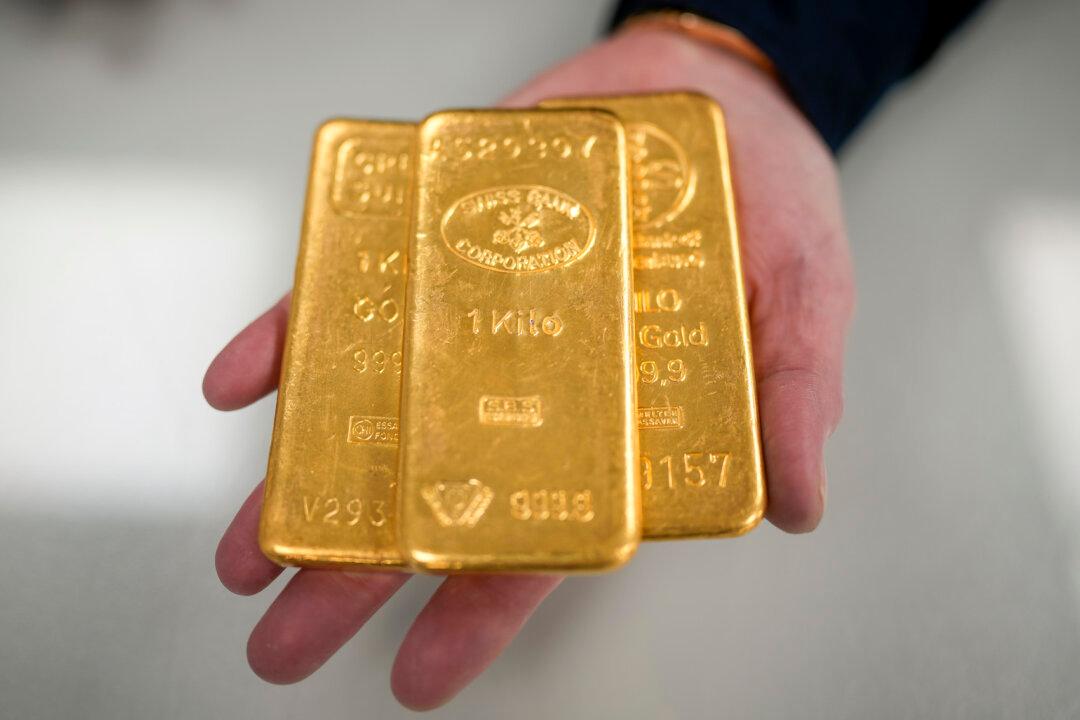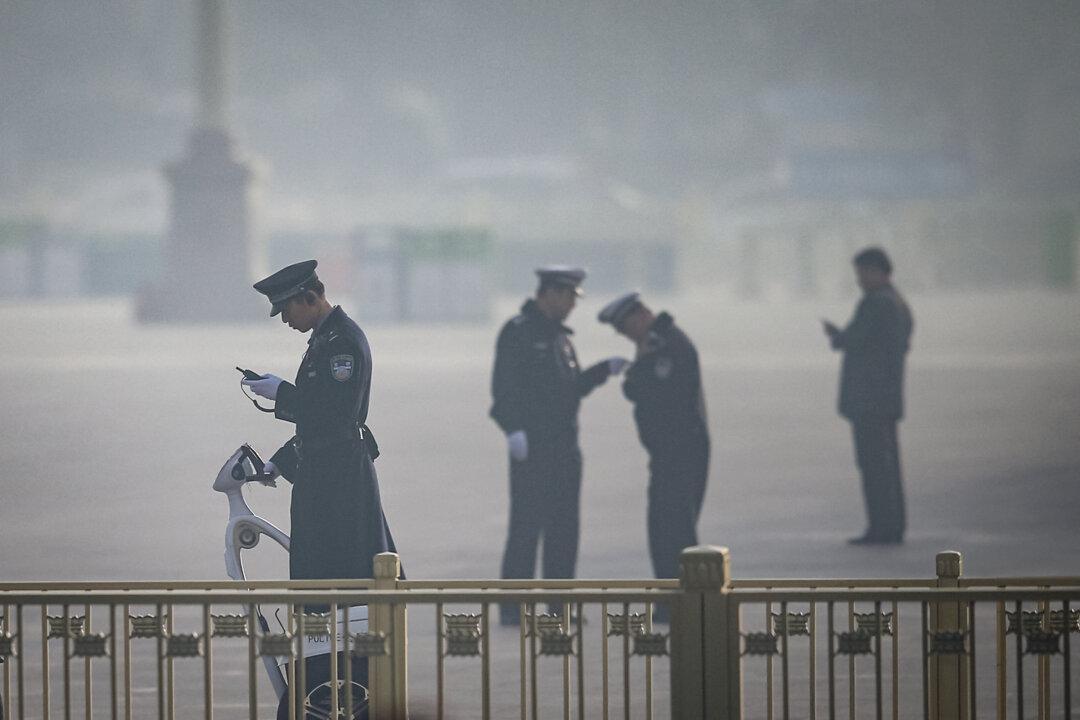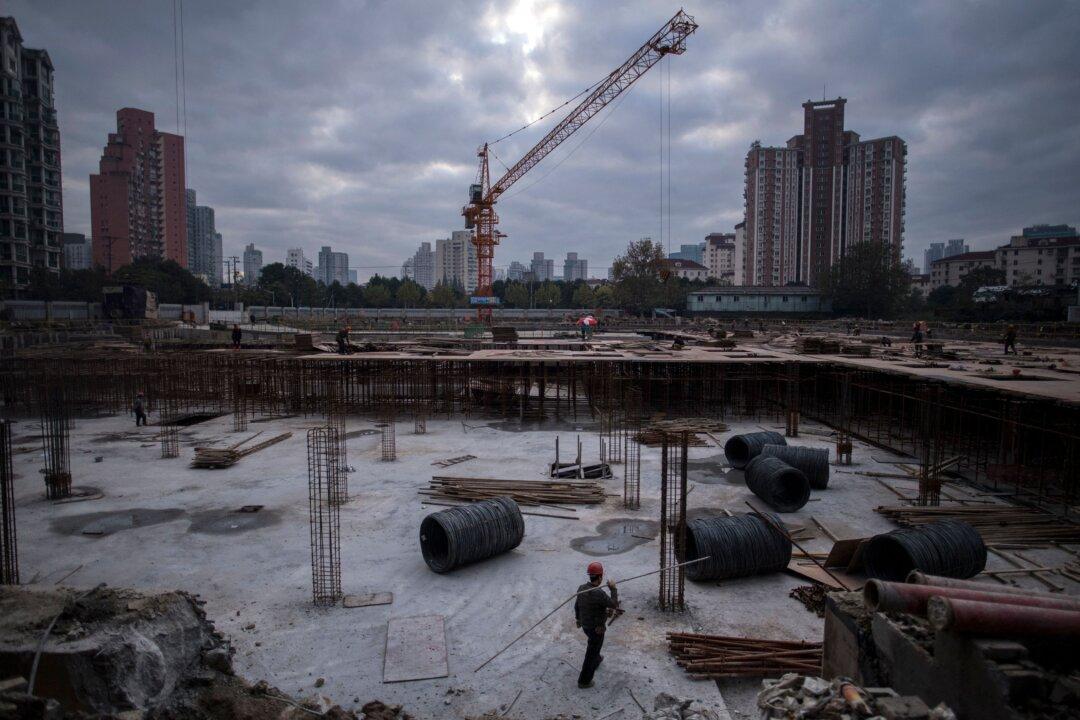The price of gold rose sharply in mid-March, reaching a new all-time high. As an investment hedging tool, the rise in the price of this rare precious metal underscores the concerns of some investors about the increasing risks in the global political and economic environment.
Will the price of gold continue to rise over the next two years? What exactly is the state of gold? And while gold prices have risen, silver has also become popular, so what will the future supply of silver look like?
Financial expert Li Zirong recently told NTD TV’s “Pinnacle View” program that the over-issuance of currency during the pandemic has led to inflation, sparking interest in gold.
According to Mr. Li, since the COVID-19 pandemic began, the United States has printed approximately $8 trillion, equivalent to about a 40 percent increase in the global dollar supply, which is a massive number. The most apparent effect is the devaluation of money. It will be a lengthy process for the market to absorb this $8 trillion, which inevitably leads to a continuous rise in gold prices.
“I hold a rather pessimistic view of the U.S. economy. Although hyperinflation has not occurred, there is a real risk of hyperinflation if the U.S. government continues to print money without restraint, which is scary for everyone,” Mr. Li said.
“Sometimes history repeats itself. The current situation is very similar to the inflation of the late 1920s and early 1930s when interest rates were raised to over 20 percent to control inflation,” he said.
Crisis Amplifies Gold Fever
Shi Shan, an expert on China issues and senior editor at The Epoch Times said on “Pinnacle View” that the price of gold and the U.S. dollar usually move in opposite directions. When the U.S. dollar is stronger, the price of gold is lower.“Currently, the U.S. Dollar Index is at its strongest level in a decade, raising the question of whether it will continue to strengthen or whether it will begin to decline. This is a very important question. So everybody is evaluating this issue,” Mr. Shi said.
He noted that inflation did not continue to fall in February but instead rebounded. Many are wondering if this trend will continue or even continue throughout the year.
“Will U.S. interest rates start to come down in the second half of the year, as many are predicting, or will they continue to go up to keep inflation in check? It’s uncertain,” Mr. Shi said.
“And don’t forget, this is an election year. The U.S. government will be under a lot of pressure to keep interest rates relatively low, so the economic data will look a little more favorable, so the election year is also an important factor to consider.”
He further pointed out that many countries’ central banks are still buying gold. A bank in Switzerland had predicted that gold would rise to $2,200 per ounce from February to March this year, and this prediction now seems remarkably accurate.
“There have been significant rises in gold prices before. In the over 10 years from the 1970s to the 1980s, gold prices rose from $35 to over $700,” Mr. Shi said.
Mr. Li also mentioned that there have been various predictions about the price of gold, including $3,000, $5,000, $8,000, and even $20,000 per ounce, which are all based on sensible analysis.
“The trend of central banks buying gold has not slowed down. The year 2022 was record-breaking, with central banks buying a total of 1,082 tons of gold, and the total for 2023 was only 45 tons less than in 2022, showing that the gold buying trend has maintained a very strong momentum,” he said.

Guo Jun, president of the Hong Kong edition of The Epoch Times, concurred that quantitative easing will definitely cause money to depreciate.
“Over the past two years, countries around the world have engaged in quantitative easing, with the U.S. national debt reaching over $30 trillion and its M2 money supply about $21 trillion. China has issued even more government debt—290 trillion yuan, or about $40 trillion,” Ms. Guo said.
“Along with the over-issuance of currency by countries around the world, currency depreciation is expected in the long run, which is the fundamental reason for the rise in gold prices,” she said.
She believes that apart from economic dangers, geopolitical risks also have a significant impact on gold fever.
“A Chinese saying goes, ‘In troubled times, buy gold.’ A friend of mine recently saw news that French President Emmanuel Macron intended to send troops to Ukraine, and he immediately placed an order to buy gold. If Russian and French troops start fighting in Ukraine, it will be the first war between two nuclear-armed countries in history. France’s entry into the war means that NATO is involved, and whether the conflict escalates into a nuclear war is unknown.”
Ms. Guo continued to say that geopolitical crises in the Middle East between Iran and Israel, in the Taiwan Strait, in the South China Sea, and on the Korean Peninsula all involve the confrontation of the world’s two major camps and all involve nuclear-armed states.
China’s Gold Mostly State Controlled
Ms. Guo reminded the audience that as a rare metal, gold is a limited resource.“To date, mankind has mined approximately 200,000 tons of gold, most of which was extracted after the 1950s,” she said. “What does 200,000 tons of gold represent? Given gold’s density is 19.32, meaning 1 cubic meter weighs 19.32 tons, 200,000 tons roughly equates to over 10,000 cubic meters. This implies all the gold currently available could fit into a soccer field with a 1-meter (about 3.3 feet) in height. Based on current gold prices, this amounts to about $13 trillion.”
The People’s Bank of China currently holds around 2,000 tons of gold reserves, ranking sixth globally.
Ms. Guo noted that China’s gold is mostly controlled by the communist state, with little in private hands. She explained the history behind this phenomenon.
“In late 1949, shortly after taking power, the Chinese Communist Party ordered the confiscation of all private gold, limiting individual holdings to less than two ounces. The rest had to be sold to the government at 70 percent of the market price, a coercive measure that was essentially a large-scale robbery,” Ms. Guo said.
“At the time, private hoarding of gold was a serious crime in China. If a household was found to be secretly hiding gold, not only was the gold confiscated, but other property was confiscated as well, and severe penalties were imposed. Gold mining in China, with the exception of small mines, was predominantly state-run, with specialized police departments overseeing it,” she said.
Silver Prices ‘Poised to Soar’
Mr. Li also shared his thoughts on the price trend of silver on Pinnacle View.“We often talk about the old adage, ‘In troubled times, buy gold.’ The same goes for silver. When the price of gold rises to a point where people can’t afford it, or when there is no gold to buy, people will turn to silver,” he said.
“I believe the price of silver is going to rise significantly over the next three years or so, and we can look at it from a number of perspectives. One is the supply-demand relationship, and another is the search for safe-haven assets. For example, the gold/silver ratio is currently 1 ounce of gold to 88 ounces of silver, which is historically a relatively high ratio, indicating that silver is at a bottom,” he said.

Regarding the supply-demand relationship, Mr. Li predicted that the demand for silver will greatly increase in the future, especially with the boom in new energy sources such as batteries, solar cells, and solar panels, all of which require a significant amount of silver due to its outstanding electrical conductivity that few other metals can replace.
“It’s estimated that if the current rate of battery and solar panel production continues, 80 percent of silver reserves will be depleted by 2026,” Mr. Li said.
“Currently, Mexico is the largest silver-producing country, accounting for 20 percent of the global silver production. However, due to Mexico’s extensive silver mining, it’s predicted that its silver reserves could be completely depleted by the end of 2025,” he said.
“Think about it, that means 20 percent of the world’s silver supply will soon be gone. Therefore, from a supply perspective, I believe that silver prices will rise sharply.”
Mr. Li also analyzed the demand for silver from individual investors.
“Silver is particularly suitable for the general public because of its low price, currently only $25 per ounce. Historically, this price is lower than where it should be,” he said.
“For example, in 2011, just over a decade ago, silver reached $35 an ounce, but now it has fallen to $25. Is that reasonable? At a time when everything else is rising in price and money is depreciating, how can silver be falling? This points to a historical imbalance that I believe will be corrected in the future. Therefore, from these perspectives, I believe that the price of silver, like gold, will also rise in the following years.”







